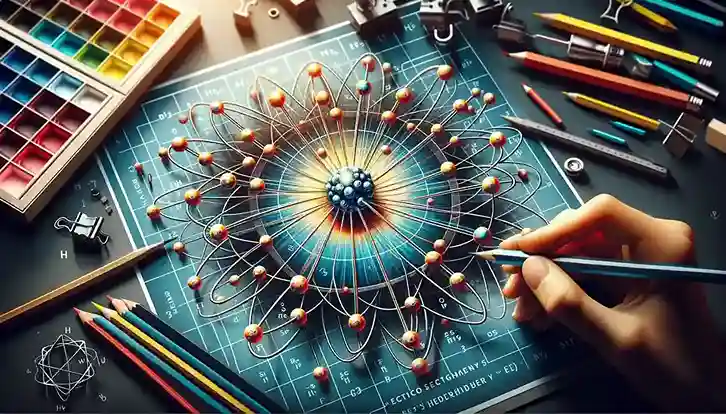NEET Physics Syllabus 2024 (updated as per recent change)
NEET Syllabus 2024 Overview
The NEET syllabus comprises of majorly three main subjects: Physics, Biology, and Chemistry. The NEET 2024 exam pattern will remain almost the same as the previous year, the NEET 2023. However, recently, there has been an update in the syllabus.
NEET Exam Overview
| NEET 2024 Exam Overview | |
|---|---|
| Particulars | Details |
| Exam Name | National Eligibility Cum Entrance Test (NEET) |
| Conducting Body | National Testing Agency (NTA) |
| Exam Level | Undergraduate (UG) Exam at National Level |
| Exam Frequency | Once a year |
| Total Registrations | 20,87,000 (NEET 2023) |
| Exam Mode | Offline or Paper Pencil Based Test |
| Courses Offered Through NEET UG | MBBS, BDS, BSc Nursing, BAMS, BVSC & AH |
| Exam Fees | INR 1,700 (General), 1,600 (OBC), 1,000 (Reserved category candidates), 9,500 (Foreign nationals) |
| Exam Duration and Timing | 3 hours and 20 minutes |
| 2 PM to 5.20 PM (IST) | |
| Number of Subjects and Total Marks | Physics (180 marks), Chemistry (180 marks), Biology (360 marks): Total Marks – 720 |
| Total Questions | 200 (180 to be attempted) |
| Marking Scheme | +4 for each correct answer |
| -1 for each incorrect answer | |
| Number of Exam Cities | 485 (India) |
| Language/Medium of Paper | 13 Languages – English, Hindi, Bengali, Urdu, Assamese, Gujarati, Marathi, Odia, Kannada, Tamil, Malayalam, Punjabi and Telugu |
| Accepting Colleges | 1,613 colleges |
| Total Number of Seats | MBBS – 1,08,890 BDS – 27,868 BAMS – 52,720 BVSc & AH – 603 |
| NEET Helpline Numbers | 011-40759000 |
| NEET Official Website | www.neet.nta.nic.in |
Reduced or Not?
Yes, there has been a reduction in the NEET syllabus 2024. Rumors were going around among the students, all started by a PDF on social media. After a few days, NMC released a notice that put these rumors to rest. This notice confirmed the changes in the syllabus and answered the doubts of the aspirants.
According to the PDF available online, the NMC has implemented certain changes to the NEET Syllabus for 2024. You can find the link to the comprehensive NMC-approved NEET 2024 Syllabus PDF in this post. To stay updated on upcoming changes to the NEET Syllabus for 2024, candidates should bookmark this page or follow the official NMC website.
List of Deleted Topics from NEET UG Physics Syllabus 2024
Below is the list of topics that have been REMOVED from the NEET UG Physics Syllabus 2024. Candidates can also access the NEET Syllabus 2024 PDF for reference by clicking here.
| Unit Name | Deleted Topics from NEET Syllabus Physics |
| Physics and Measurement | Scope and excitement; nature of physical laws; Physics, technology, and society Need for measurement: Length, mass, and time measurements, accuracy and precision of measuring instruments. |
| Kinematics | Reflection and refraction of plane wave at a plane surface using wavefronts, Scattering of the light-blue colour of the sky and reddish appearance of the sun at sunrise and sunset, Optical instruments: Human eye, image formation, and accommodation, correction of eye defects (myopia and hypermetropia) using lenses, Microscopes and astronomical telescopes (reflecting and refracting) and their magnifying powers. |
| Laws of Motion | Equilibrium of concurrent forces, lubrication |
| Rotational Motion | Elementary concepts of differentiation and integration for describing motion, Scalar, and vector quantities: Position and displacement vectors, general vectors, general vectors and notation, equality of vectors, multiplication of vectors by a real number |
| Gravitation | Geostationary satellites |
| Properties of Solids and Liquids | Shear, Poisson’s ratio; elastic energy, Reynold’s number, Qualitative ideas of Black Body Radiation, Wein’s displacement law, and Green House effect, Cp, Cv, Newton’s law of cooling and Stefan’s law |
| Thermodynamics | Heat engines and refrigerators |
| Oscillations and Waves | Reflection and refraction of plane wave at a plane surface using wavefronts, Scattering of the light-blue color of the sky and reddish appearance of the sun at sunrise and sunset, Optical instruments: Human eye, image formation, and accommodation, correction of eye defects (myopia and hypermetropia) using lenses, Microscopes and astronomical telescopes (reflecting and refracting) and their magnifying powers. |
| Electrostatics | Free charges and bound charges inside a conductor, Van de Graaff generator |
| Current Electricity | The flow of electric charges in a metallic conductor, Carbon resistors, color code for carbon resistors, Potentiometer-principle and applications to measure potential difference, and for comparing emf of two cells; measurement of internal resistance of a cell |
| Magnetic Effects of Current and Magnetism | Free, forced, and damped oscillations (qualitative ideas only), Resonance, Doppler effect |
| Electromagnetic Induction and Alternating Current | LC oscillations (qualitative treatment only) |
| Optics | Concept of the magnetic field, Oersted’s experiment, Cyclotron, Magnetic dipole moment of a revolving electron, Earth’s magnetic field and magnetic elements, Electromagnetic and factors affecting their strengths, Permanent magnets |
| Dual Nature of Matter and Radiation | Isotopes, isobars; isotones, Radioactivity- alpha, beta, and gamma particles/ rays and their properties decay law |
| Atoms and Nuclei | Reflection and refraction of plane wave at a plane surface using wavefronts, Scattering of the light-blue color of the sky and reddish appearance of the sun at sunrise and sunset, Optical instruments: Human eye, image formation, and accommodation, correction of eye defects (myopia and hypermetropia) using lenses, Microscopes and astronomical telescopes (reflecting and refracting) and their magnifying powers. |
| Electronic Devices | Energy bands in solids (qualitative ideas only), conductors, insulators, Junction transistor, transistor action, characteristics of a transistor; transistor as an amplifier (common emitter configuration) and oscillator, Transistor as a switch |
NEET 2024 Physics New Topics Added
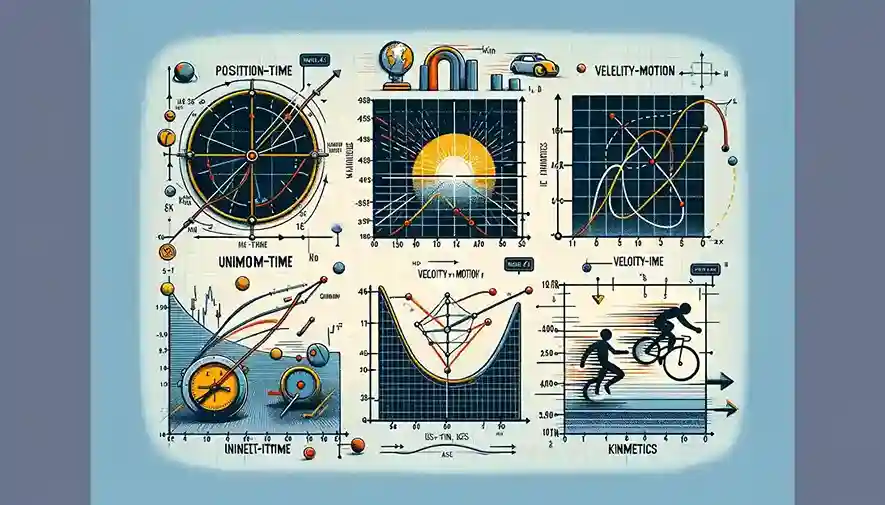
Given below is the list of topics added to the NEET Physics syllabus.
| Unit Name | Added Topics to NEET Syllabus Physics |
| Gravitation | Motion of a satellite, time period, and energy of a satellite |
| Properties of Solids and Liquids | Pressure due to a fluid column; Pascal’s law and its applications. Effect of gravity on fluid pressure |
| Kinetic Theory of Gases | RMS speed of gas molecules, Avogadro’s number |
| Magnetic Effects of Current and Magnetism | Effect of temperature on Magnetic Properties |
| Dual Nature of Matter and Radiation | Dual nature of radiation |
| Experimental Skills | Familiarity with the basic approach and observations of the experiments and activities: 1. Vernier callipers: it’s to measure the internal and external diameter and depth of a vessel. 2. Screw gauge-its use to determine the thickness and diameter of thin sheet/wire. 3. Simple pendulum-dissipation of energy by plotting a graph between the square of amplitude and time. 4. Metre Scale – the mass of a given object by the principle of moments. 5. Young’s modulus of elasticity of the material of a metallic wire. 6. Surface tension of water by capillary rise and effect of detergents. 7. Co-efficient of Viscosity of a given viscous liquid by measuring the terminal velocity of a given spherical body. 8. Speed of sound in air at room temperature using a resonance tube. 9. Specific heat capacity of a given (i) solid and (ii) liquid by method of mixtures. 10. The resistivity of the material of a given wire using a meter bridge. 11. The resistance of a given wire using Ohm’s law. 12. Resistance and figure of merit of a galvanometer by half deflection method. 13. The focal length of;(i) Convex mirror(ii) Concave mirror, and(iii) Convex lens, using the parallax method. 14. The plot of the angle of deviation vs angle of incidence for a triangular prism. 15. Refractive index of a glass slab using a traveling microscope. 16. Characteristic curves of a p-n junction diode in forward and reverse bias. 17. Characteristic curves of a Zener diode and finding reverse breakdown voltage. 18. Identification of Diode. LED,. Resistor. A capacitor from a mixed collection of such item |
NEET Syllabus 2024 Classwise Physics: Overview
| Class 11 | Class 12 |
| UNIT 1: Physical World and Measurement | UNIT 11: Electrostatics |
| UNIT 2: Kinematics | UNIT 12: Current Electricity |
| UNIT 3: Laws of Motion | UNIT 13: Magnetic Effects of Current and Magnetism |
| UNIT 4: Work, Energy and Power | UNIT 14: Electromagnetic Induction and Alternating Currents |
| UNIT 5: Motion of System of Particles and Rigid Body [Rotational Motion] | UNIT 15: Electromagnetic Waves |
| UNIT 6: Gravitation | UNIT 16: Optics |
| UNIT 7: Properties of Solids and Liquids | UNIT 17: Dual Nature of Matter and Radiation |
| UNIT 8: Thermodynamics | UNIT 18: Atoms and Nuclei |
| UNIT 9: Kinetic Theory of Gases | UNIT 19: Electronic Devices |
| UNIT 10: Oscillations and Waves | UNIT 20: Experimental Skills |
NEET Physics Syllabus 2024 : Detailed
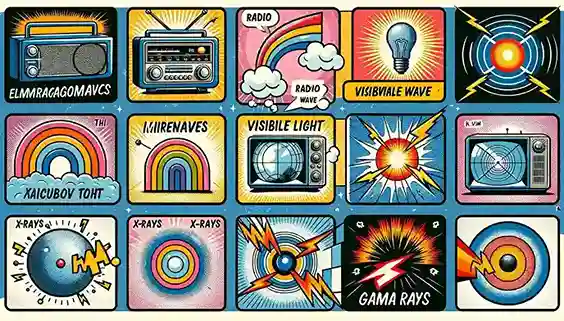
UNIT I: PHYSICS AND MEASUREMENT
Units of measurements. System of Units, S I Units, fundamental and derived units, least count, significant figures, Errors in measurements, Dimensions of Physics quantities, dimensional analysis, and its applications.
UNIT 2: KINEMATICS
The frame of reference, motion in a straight line, Position- time graph, speed and velocity: Uniform and non-uniform motion, average speed and instantaneous velocity, uniformly accelerated motion, velocity-time, position-time graph, relations for uniformly accelerated motion, Scalars and Vectors, Vector, Addition and subtraction, scalar and vector products, Unit Vector, Resolution of a Vector, Relative Velocity, Motion in a plane, Projectile Motion, Uniform Circular Motion.
UNIT 3: LAWS OF MOTION
Force and inertia, Newton’s First Law of motion, Momentum, Newton’s Second Law of motion, Impulses, Newton’s Third Law of motion, Law of conservation of linear momentum and its applications, and Equilibrium of concurrent forces.
Static and Kinetic friction, laws of friction, rolling friction.
Dynamics of uniform circular motion: centripetal force and its applications; vehicle on a level circular road, vehicle on a banked road.
UNIT 4: WORK, ENERGY, AND POWER
Work done by a constant force and a variable force; kinetic and potential energies, work-energy theorem, power.
The potential energy of a spring, conservation of mechanical energy, conservative and non-conservative forces; motion in a vertical circle. Elastic and inelastic collisions in one and two dimensions.
UNIT 5: ROTATIONAL MOTION
Centre of the mass of a two-particle system, Centre of the mass of a rigid body, Basic concepts of rotational motion, moment of a force, torque, angular momentum, conservation of angular momentum and its applications.
The moment of inertia, the radius of gyration, values of moments of inertia for simple geometrical objects, parallel and perpendicular axes theorems, and their applications, Equilibrium of rigid bodies, rigid body rotation and equations of rotational motion, comparison of linear and rotational motions.
UNIT 6: GRAVITATION
The universal law of gravitation, Acceleration due to gravity and its variation with altitude and depth, Kepler’s law of planetary motion, Gravitational potential energy, gravitational potential, Escape velocity, Motion of a satellite, orbital velocity, time period, and energy of a satellite.
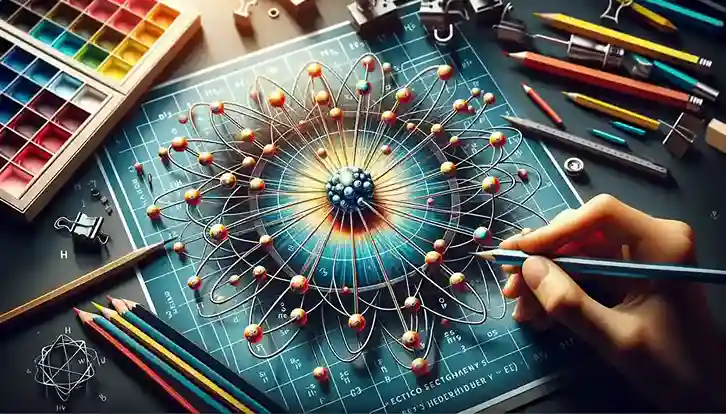
UNIT 7: PROPERTIES OF SOLIDS AND LIQUIDS
Elastic behavior, Stress-strain relationship, Hooke’s Law, Young’s modulus, bulk modulus, modulus of rigidity, Pressure due to a fluid column, Pascal’s law and its applications, Effect of gravity on fluid pressure.
Viscosity, Stokes’ law, terminal velocity, streamline, turbulent flow, critical velocity, Bernoulli’s principle, and its applications.
Surface energy and surface tension, angle of contact, excess of pressure across a curved surface, application of surface tension – drops, bubbles, and capillary rise, Heat, temperature, thermal expansion, specific heat capacity, calorimetry, change of state, latent heat. Heat transfer-conduction, convection, and radiation.
UNIT 8: THERMODYNAMICS
Thermal equilibrium, zeroth law of thermodynamics, the concept of temperature, Heat, work, and internal energy, The first law of thermodynamics, isothermal and adiabatic processes.
The second law of thermodynamics: reversible and irreversible processes.
UNIT 9: KINETIC THEORY OF GASES
Equation of state of a perfect gas, work done on compressing a gas, Kinetic theory of gases – assumptions, the concept of pressure, Kinetic interpretation of temperature, RMS speed of gas molecules. Degrees of freedom, Law of equipartition of energy and applications to specific heat capacities of gases, Mean free path, Avogadro’s number.
UNIT 10: OSCILLATIONS AND WAVES
Oscillations and periodic motion – time period, frequency, displacement as a function of time, Periodic functions, Simple harmonic motion (S.H.M.) and its equation, phase, oscillations of a spring -restoring force and force constant, energy in S.H.M. – Kinetic and potential energies, Simple pendulum – derivation of expression for its time period.
Wave motion, Longitudinal and transverse waves, speed of the traveling wave, Displacement relation for a progressive wave, Principle of superposition of waves, reflection of waves, Standing waves in strings and organ pipes, fundamental mode and harmonics, Beats.
UNIT 11: ELECTROSTATICS
Electric charges, Conservation of charge, Coulomb’s law forces between two point charges, forces between multiple charges, superposition principle, and continuous charge distribution.
Electric field, Electric field due to a point charge, Electric field lines, Electric dipole, Electric field due to a dipole, Torque on a dipole in a uniform electric field.
Electric flux, Gauss’s law and its applications to find field due to infinitely long uniformly charged straight wire, uniformly charged infinite plane sheet, and uniformly charged thin spherical shell, Electric potential, and its calculation for a point charge, electric dipole and system of charges, potential difference, Equipotential surfaces, Electrical potential energy of a system of two point charges and of electric dipole in an electrostatic field.
Conductors and insulators. Dielectrics and electric polarization, capacitors, and capacitances, the combination of capacitors in series and parallel, capacitance of a parallel plate capacitor with and without dielectric medium between the plates. Energy is stored in a capacitor.
UNIT 12: CURRENT ELECTRICITY
Electric current, Drift velocity, mobility and their relation with electric current, Ohm’s law, Electrical resistance, V-I characteristics of ohmic and non-ohmic conductors, Electrical energy and power, Electrical resistivity, and conductivity. Series and parallel combinations of resistors. Temperature dependence of resistance.
Internal resistance, potential difference and emf of a cell, a combination of cells in series and parallel, Kirchhoff’s laws and their applications, Wheatstone bridge, Metre Bridge.
UNIT 13: MAGNETIC EFFECTS OF CURRENT AND MAGNETISM
Biot – Savart law and its application to current-carrying circular loop, Ampere’s law and its applications to infinitely long current carrying straight wire and solenoid, Force on a moving charge in uniform magnetic and electric fields.
Force on a current-carrying conductor in a uniform magnetic field. The force between two parallel current-carrying conductors-definition of ampere. Torque experienced by a current loop in a uniform magnetic field, Moving coil galvanometer, its sensitivity and conversion to ammeter and voltmeter.
Current loop as a magnetic dipole and its magnetic dipole moment, Bar magnet as an equivalent solenoid, magnetic field lines, Magnetic field due to a magnetic dipole (bar magnet) along its axis and perpendicular to its axis, Torque on a magnetic dipole in a uniform magnetic field, para, dia, and ferromagnetic substances with examples, effect of temperature on magnetic properties.
UNIT 14: ELECTROMAGNETIC INDUCTION AND ALTERNATING CURRENTS
Electromagnetic induction, Faraday’s law, Induced emf and current, Lenz’s Law, Eddy currents, Self and mutual inductance, Alternating currents, peak and RMS value of alternating current/voltage, reactance, and impedance: LCR series circuit, resonance, power in AC circuits, wattless current. AC generator and transformer.
UNIT 15: ELECTROMAGNETIC WAVES
Displacement current, Electromagnetic waves, and their characteristics. Transverse nature of electromagnetic waves, Electromagnetic spectrum (radio waves, microwaves, infrared, visible, ultraviolet, X-rays, Gamma rays), Applications of e.m. waves.
UNIT 16: OPTICS
Reflection of light, spherical mirrors, mirror formula. Refraction of light at plane and spherical surfaces, thin lens formula, and lens maker formula. Total internal reflection and its applications. Magnification. Power of a Lens. Combination of thin lenses in contact. Refraction of light through a prism. Microscope and Astronomical Telescope (reflecting and refracting) and their magnifying powers.
Wave optics: wavefront and Huygens’ principle. Laws of reflection and refraction using Huygens principle. Interference, Young’s double-slit experiment, and expression for fringe width, coherent sources, and sustained interference of light. Diffraction due to a single slit, width of central maximum. Polarization, plane-polarized light, Brewster’s law, uses of plane-polarized light and Polaroid.
UNIT 17: DUAL NATURE OF MATTER AND RADIATION
Dual nature of radiation, Photoelectric effect. Hertz and Lenard’s observations; Einstein’s photoelectric equation: particle nature of light. Matter waves-wave nature of particle, de Broglie relation.
UNIT 18: ATOMS AND NUCLEI
Alpha-particle scattering experiment, Rutherford’s model of the atom: Bohr model, energy levels, hydrogen spectrum. Composition and size of nucleus, atomic masses, Mass-energy relation, mass defect, the binding energy per nucleon and its variation with mass number, nuclear fission, and fusion.
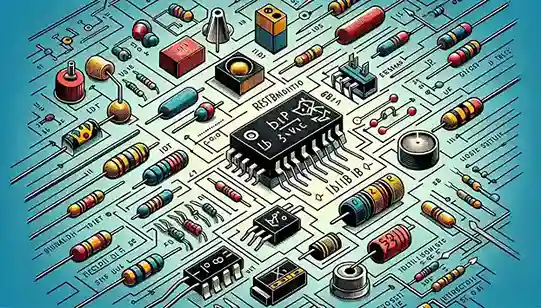
UNIT 19: ELECTRONIC DEVICES
Semiconductors; semiconductor diode: I-V characteristics in forward and reverse bias, diode as a rectifier; I-V characteristics of LED, photodiode, solar cell, and Zener diode; Zener diode as a voltage regulator, Logic gates (OR, AND, NOT, NAND, and NOR).
UNIT 20: EXPERIMENTAL SKILLS
Familiarity with the basic approach and observations of the experiments and activities:
- Vernier calipers – its use to measure the internal and external diameter and depth of a vessel.
- Screw gauge – its use to determine the thickness/diameter of thin sheet/wire.
- Simple pendulum – dissipation of energy by plotting a graph between the square of amplitude and time.
- Metre Scale – the mass of a given object by the principle of moments.
- Young’s modulus of elasticity of the material of a metallic wire.
- Surface tension of water by capillary rise and effect of detergents.
- Co-efficient of Viscosity of a given viscous liquid by measuring terminal velocity of a given spherical body.
- Speed of sound in air at room temperature using a resonance tube.
- Specific heat capacity of a given (i) solid and (ii) liquid by the method of mixtures.
- The resistivity of the material of a given wire using a meter bridge.
- The resistance of a given wire using Ohm’s law.
- Resistance and figure of merit of a galvanometer by half-deflection method.
- The focal length of (i) Convex mirror, (ii) Concave mirror, and (iii) Convex lens, using the parallax method.
- The plot of the angle of deviation vs. angle of incidence for a triangular prism.
- The refractive index of a glass slab using a traveling microscope.
- Characteristic curves of a p-n junction diode in forward and reverse bias.
- Characteristic curves of a Zener diode and finding reverse breakdown voltage.
- Identification of Diode, LED, Resistor, A capacitor from a mixed collection of such items.
How to go about it
I want you guys to do one thing today. I hope you all have bought your NCERTS, if not, buy them today. Just go through the book, open the syllabus pdf, and start marking. Put a tick next to the sections that are included in the syllabus and a cross next to the ones that have been deleted. Write down the names of the topics that have been included in the syllabus but are not given in the NCERT. Write these down in your Textbook index, so that you do not forget to incorporate them into your preparation.
This is the first step and now, your preparation begins.
Head over to the weightage blog to know the next step.
